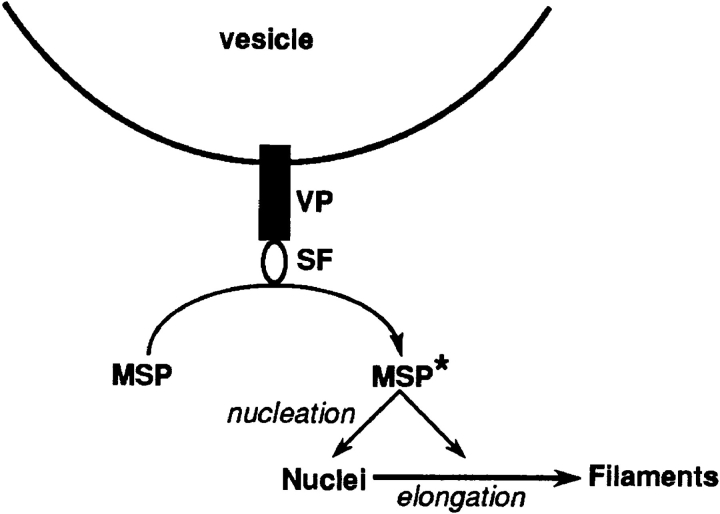Figure 8.
Mechanism of vesicle-associated MSP filament polymerization suggested by the pressure and dilution data. Because polymerization occurs primarily in the vicinity of the vesicle, we propose that fiber growth involves conversion of MSP into a short-lived, activated form (MSP*) that polymerizes much more rapidly under physiological conditions than MSP itself. Conversion of MSP to MSP* requires an integral membrane protein (VP) in the vesicle that recruits a soluble cytosolic protein (SF) to the vesicle surface. The active VP/SF component then converts MSP to MSP* that polymerizes to form fibers. Although the diagram shows SF bound to VP, SF could bind transiently to and activate VP, or be activated by VP and release. Because MSP* is short lived, its concentration would fall rapidly away from the vesicle, and the filaments in the bulk of the fiber would contain primarily MSP rather than MSP*. Therefore, this model accounts for the formation of MSP fibers only in the immediate vicinity of the vesicle and the effects of pressure and dilution on the rate of fiber formation.

